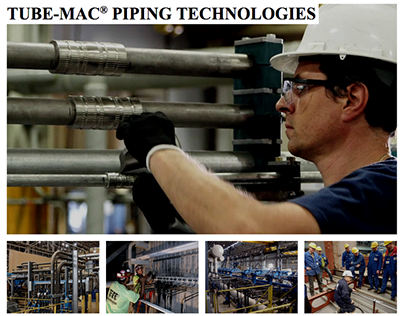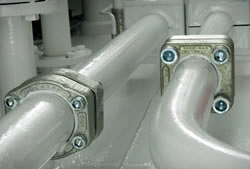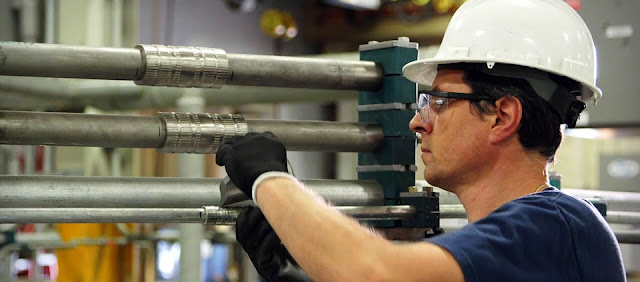Summary:
Non-welded piping is a progression in piping construction
systems where no welding is mandatory with no concession in the strength of the
piping system. This technology has taken liberation to many establishments
around the world in terms of protection, cleanliness, time constrictions, and a
lot more. In this article, we will discuss some important things about
non-welding fittings that you should know.
Body:
Pipe fittings are components that are generally used for
joining pipe sections together with other fluid control products like valves
and pumps for creating pipelines. There are basically two different types of
fitting – welded and non-welded.
Non-welded fittings are generally used for hydraulic pipe
applications including pipe grooving and threadless fittings. It also helps to
reduce the time required for each connection. It is ideal to find a reliable
non-welded piping system supplier to get high-quality weldless fittings,
retain flange, flare flange, supplemental products, and many others. Below, I’m
going to share some important things about non-welded fittings that you should
know.
Non-Welded Fitting Applications
- Non-welded pipe fittings are used in a wide range of industries, including:
- Refinery
- Offshore
- Automotive testing
- Aerospace/ wind turbine
- Shipbuilding
- Naval
- Steel & power
- Water mist and many others
There are a lot of intrinsic benefits of non-welded
fittings, including:
- Clean
The non-welded fitting is clean as there is no welding. There is no tricky of weld contaminants enduring in the hydraulic system and damaging the hydraulic apparatuses because of inappropriate flushing.
- Cost-Effective
Non-Welded piping gets a lot of cost benefits because it
does not require any expert since an untrained person with suitable knowledge
of the non-welded fitting can effortlessly carry out the assemblage.
Weld joints involve the pipe to be acidly flushed to
eliminate the impurities and post that be reviewed by x-ray test, DPT, or
ultrasound. These procedures are not mandatory by or appropriate to the
non-welded system since they are spotless and are combined by reliable
/established seals. Non-welded is cost-effective over the whole life cycle of
the piping system; since it is inexpensive to reparation because of the use of
seals.
- Safe
Non-welded piping technology is a safe and protected
technique for assembling pipes; meanwhile, there is no hot work, there is no
query of any risks. There is also no need of taking security permits or
abandoning sensitive equipment in the vicinity of the exertion area which is
monotonous.
There is also a benefit of evading any disturbance of
imperative doings like bunkering, tank smearing, etc. There are also no method
risks like a revelation to radiation in the case of joining.
- Time-Saving
Non-welded piping systems are quick to connect as the pipes
are already fictitious, prepared, flushed, and painted at the workshop. It
includes the only assembly of the assembled piping spools at the site.
Conventional welding includes manufacturing on-site which is time-consuming.
Also, after soldering at the site cleaning and painting is
still compulsory and all these procedures can generate untidiness in a workshop
environment. Welding also generates a probability for fire and smoke at the
site which is not perfect.
- Easy
In non-welded piping, the flanges can be effortlessly
alternated as opposed to conservative welding where the flange direction is
immovable. Hence assembly and connection are simple in non-welded piping as the installer does not take to worry about the alignment of the flanges during
construction or installation.
In the case of a pre-fabricated scheme, all that is
compulsory on site is positioning/setting the assemblages and involving the
joints. This procedure requires less equipment/power/labor at the site and is
finished faster than the welding method.
Conclusion:
These are some important things that you should know about
the non-welded piping system. You can find a reliable non-welded piping
technology supplier to get the best quality weldless fittings, retain
flange, flare flange, supplemental products, and many others.
About the Author:
The author is associated with a piping system repair and
installation business, capable of providing field technical services to train
local contractors or shipyard personnel on the proper use of pipe fabricating
equipment and installation of non-welded piping systems. The company provides a
wide range of products including non-welded 37° flare flange, retain ring flange, weldless fittings, mechanically attached fittings, supplemental
products, and many others at affordable prices.











